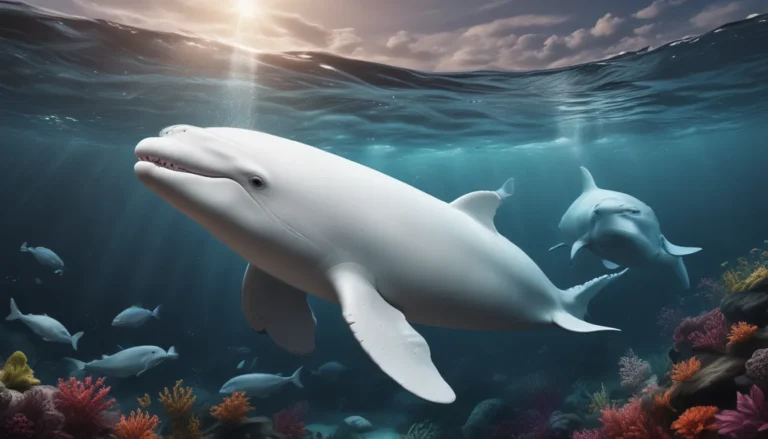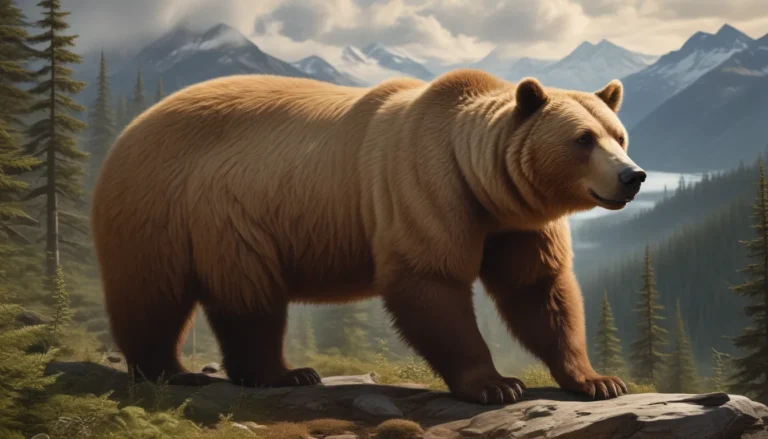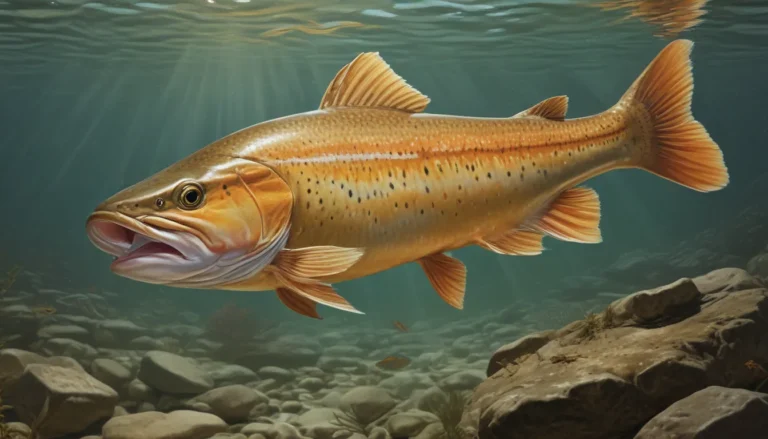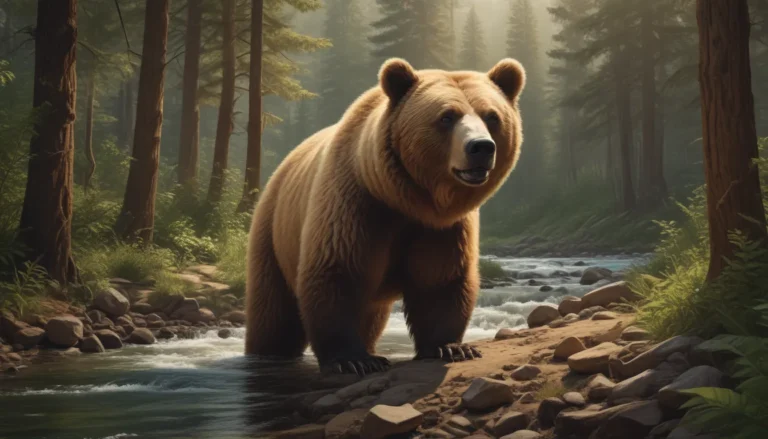The pictures we use in our articles might not show exactly what the words say. We choose these pictures to make you interested in reading more. The pictures work together with the words but don’t take their place. The words still tell you the important facts.
The Ice Age, also known as the Pleistocene epoch, was a remarkable period in Earth's history marked by a significant drop in temperature and the emergence of vast glaciers. Within this icy landscape, a diverse array of unique and captivating animals thrived. From mighty mammoths to ferocious saber-toothed cats, Ice Age animals continue to captivate our imagination and provide invaluable insights into the ancient world.
Unveiling Ice Age Animal Insights:
- Ice Age creatures like the Woolly Mammoth and Saber-toothed Tiger were colossal beings with special adaptations to survive the harsh cold climate.
- These remarkable animals, including the Giant Sloth and the Cave Lion, once roamed the Earth during the Ice Age before going extinct, leaving behind a legacy that fascinates us to this day.
Journey Back In Time:
Let's embark on a journey back in time to uncover 10 intriguing facts about the animals that roamed the icy terrains of the Ice Age. Join us as we explore the lives and adaptations of these incredible creatures, gaining a deeper understanding of their existence in a world drastically different from our own.
The Woolly Mammoth: A Colossal Giant
The Woolly Mammoth, a distant relative of today’s elephants, was one of the largest mammals to roam the Earth during the Ice Age. Standing up to 11 feet tall at the shoulder and weighing up to 6 tons, these colossal creatures grazed on grasses and vegetation. Their thick fur and fat hump were key adaptations that helped them survive in the harsh cold temperatures. Despite their dominance, Woolly Mammoths eventually went extinct around 4,000 years ago, leaving behind a legacy of grandeur.
Saber-toothed Tigers: Mighty Predators
The Saber-toothed Tiger, or Smilodon, was a prehistoric predator with enormous, sharp teeth that could grow up to 7 inches long. Despite not being closely related to modern tigers, these creatures were around the same size as today's African lions, boasting a muscular build and impressive hunting prowess. Saber-toothed Tigers roamed North and South America during the Ice Age before facing extinction about 10,000 years ago, leaving behind a legacy of fear and fascination.
The Gentle Giant Sloth: A Majestic Giant
The Giant Sloth, one of the largest ground-dwelling mammals of the Ice Age, may have been slow-moving, but its strong limbs and sharp claws were formidable defensive and climbing assets. With lengths reaching up to 20 feet and weights of up to 4 tons, these herbivores had a unique appearance characterized by long, curved claws and a broad, flat head. Despite their majestic stature, Giant Sloths became extinct around 11,000 years ago, leaving a void in the ancient ecosystem they once inhabited.
The Dire Wolf: A Mighty Predator
The Dire Wolf, larger and more robust than modern-day wolves, possessed a stocky build ideal for hunting large prey. These carnivorous beasts lived in packs, with strong jaws lined with sharp teeth to secure their meals. Despite their formidable presence, Dire Wolves eventually faced extinction around 9,500 years ago, marking the end of an era where these majestic predators roamed the icy landscapes.
Smilodon: The Unique Saber-toothed Cat
Contrary to popular belief, the Smilodon, known as the saber-toothed cat, was not closely related to modern felines. With a stout body structure and unique adaptations, including short tails, powerful forelimbs, and strong neck muscles, these prehistoric predators were formidable hunters. Smilodons targeted large herbivores like bison and horses, showcasing their prowess in the carnivorous realm.
Giant Ground Sloths: Towering Herbivores
The Giant Ground Sloths, towering above giraffes in height, were massive creatures with long front legs and powerful claws suited for digging burrows. Primarily herbivorous, these mammals fed on plants and leaves across North and South America during the Ice Age. Despite their impressive stature, Giant Ground Sloths met their demise around 10,000 years ago, marking the end of an era where these gentle giants roamed the ancient landscapes.
The Legendary Irish Elk: A Majestic Creature
The Irish Elk, or Megaloceros, sported the largest antlers of any deer species, spanning up to 12 feet from tip to tip. Despite its name, the Irish Elk was not closely related to modern elk species, using its impressive antlers to compete for mates during the breeding season. Around 7,700 years ago, these majestic creatures faced extinction, leaving behind a legacy of beauty and grace in the ancient world.
The American Lion: A Mighty Predator
The American Lion, also known as Panthera atrox, stood as one of the largest cats in history, approximately 25% larger than modern African lions. Roaming North America during the Ice Age, these muscular predators hunted large herbivores like bison and mammoths. Despite their dominance, the American Lion met its demise around 11,000 years ago, leaving a legacy of fear and awe in the fossil record.
The Resilient Cave Lion: A Cold-Climate Survivor
The Cave Lion, or Panthera leo spelaea, was a subspecies of lion that thrived in Eurasia during the Ice Age. With a robust build and distinctive thick, shaggy coat, these animals adapted to survive in the cold climate of their habitat. Skilled hunters living in prides, Cave Lions eventually faced extinction around 14,000 years ago, marking the end of an era where these magnificent creatures roamed the icy terrains of ancient continents.
Woolly Rhinoceros: A Cold-Weather Specialist
The Woolly Rhinoceros, also known as Coelodonta, featured a unique hump of muscle on its shoulders, serving as a resource store during times of scarcity. With two large horns made of keratin, these massive herbivores traversed Europe and northern Asia during the last Ice Age. Despite their impressive adaptations, Woolly Rhinos went extinct around 10,000 years ago, leaving behind a legacy of resilience and survival in the face of changing landscapes.
Delving Into the Ice Age Animal Legacy
In conclusion, the Ice Age stands as a captivating chapter in Earth's history, shedding light on the existence of a diverse array of remarkable animals. From the iconic Woolly Mammoth to the formidable Saber-toothed Tiger, these creatures have left an indelible mark on our understanding of prehistoric life and the ancient ecosystems they inhabited. Resilient and adaptable, Ice Age animals continue to inspire awe and curiosity, prompting further exploration into the wonders of our planet's deep past.
Frequently Asked Questions:
-
What is the Ice Age?
The Ice Age refers to a period in Earth's history characterized by widespread ice and glaciers, impacting the planet's climate, flora, and fauna over millions of years. -
What are some common Ice Age animals?
Common Ice Age animals include Woolly Mammoths, Saber-toothed Tigers, Giant Sloths, Dire Wolves, and Cave Lions, each uniquely adapted to survive in cold and challenging environments. -
How did Ice Age animals adapt to the cold?
Ice Age animals developed various adaptations such as long fur, large body sizes, and specialized teeth to cope with the cold temperatures and harsh conditions of their environment. -
Are any Ice Age animals still alive today?
No, all Ice Age animals have gone extinct. However, some modern-day animals share common ancestors with Ice Age species, creating evolutionary connections that span millennia. -
Did humans coexist with Ice Age animals?
Humans, specifically early Homo sapiens, coexisted with Ice Age animals, hunting and interacting with creatures like Woolly Mammoths and Cave Bears as evidenced by cave paintings and fossil records. -
How do scientists study Ice Age animals?
Scientists study Ice Age animals through fossil records, DNA analysis, and anatomical studies of teeth, bones, and soft tissues. By reconstructing habitats and behaviors through various methods, researchers gain insights into the ancient ecosystems these creatures inhabited.
Trust in Our Commitment to Quality
Our dedication to delivering trustworthy and engaging content is evident in every fact we share. Our community of real users contributes diverse insights, and our editors ensure the accuracy and reliability of each submission. Trust in our commitment to quality and authenticity as we delve into the wonders of the ancient world, exploring fascinating Ice Age animals and their enduring legacy.






